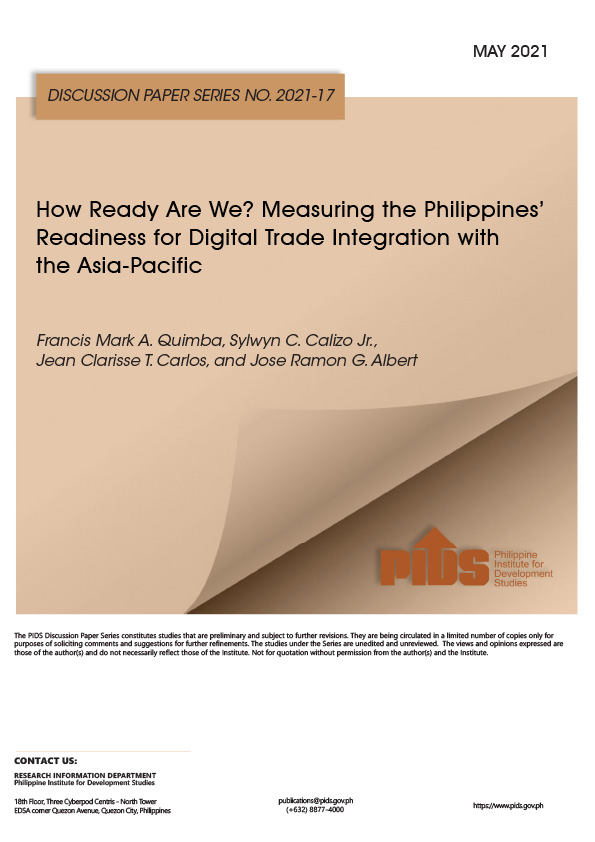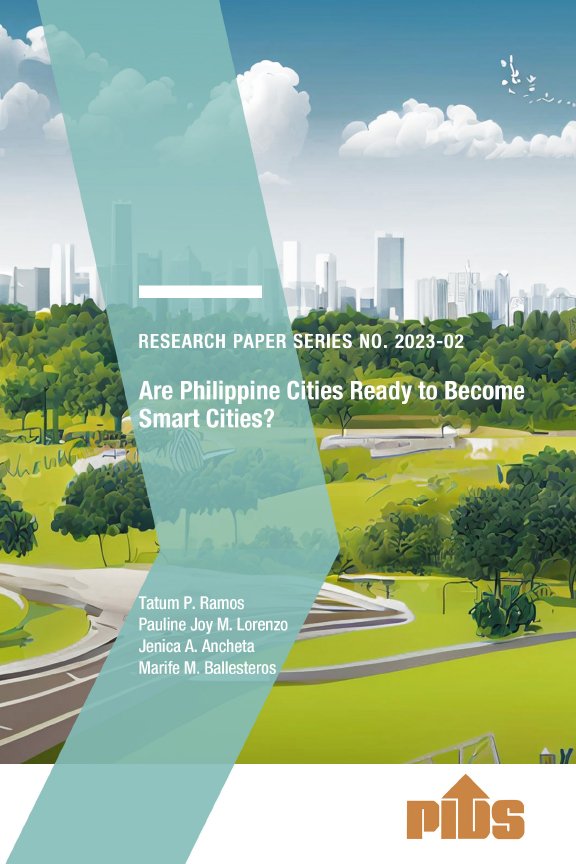By Rene Acosta, David Cagahastian, Manuel T. Cayon, Rea Cu, Jovee Marie N. dela Cruz, Lenie Lectura, Recto Mercene, Claudeth Mocon-Ciriaco, Jonathan L. Mayuga, Cai U. Ordinario, Mary Grace Padin & Joel R. San Juan
People and vehicles navigate through neck-deep waters in the aftermath of Typhoon Ondoy in Marikina City.
MANILA and Davao City–Two names make many people cringe in fear: Ondoy and Yolanda. These are the names of supertyphoons that brought misery, even nearly seven years after Typhoon Ondoy
(international code name Ketsana) brought parts of Metro Manila under water.
After the heat, however, weathermen like Anthony Lucero are saying the country is facing a wet season under La Niña.
Philippine Atmospheric, Geophysical and Astronomical Services Administration’s (Pagasa) Lucero said there is a 50-percent chance of La Niña’s developing after the onslaught of El Niño in the country.''
"We will know for sure in July,” said Lucero, Pagasa’s climate monitoring and prediction section chief.
La Niña is characterized by the cooler temperature in the Equatorial Pacific and is associated with above-normal rainfall levels. The expert said in three out of four cases where a strong El Nino occurs, La Niña follows.
"This means there is a strong possibility that La Niña may occur after El Niño,” Lucero said in a phone interview. El Niño, to note, is marked by unusually warm weather and could eventually lead to drought.
Impact
WEATHER changes impact more the poor, especially those in rural areas.
While Cid Terosa of the University of Asia and the Pacific (UA&P) School of Economics said La Niña would not be enough to dampen overall GDP, "it can impoverish many in the rural areas.”
"La Niña will lower the contribution of agriculture to GDP growth even more,” Terosa, UA&P senior economist, told the BusinessMirror.
He noted that from 2011 to 2015, the contribution of agriculture to GDP growth was below 0.5 percent.
Terosa said the country should expect "about 1-percentage-point increase in the poverty rate” if La Niña hits the country.
However, Alvin Ang of the Ateneo de Manila University said, "The impact won’t be so much on agriculture but will be more on the infrastructure and agriculture support.” Ang, who teaches Economics at Ateneo, explained typhoons could boost government spending in La Niña-affected areas.
"Offhand, the rains are welcome to replenish the catch basins as long as no significant storm will occur,” Ang told the BusinessMirror. "Nonetheless, government, particularly LGUs [local government units], must fully survey their areas to ensure that whatever damage comes will be minimized.”
Spending
ACCORDING to Communications Secretary Herminio B. Coloma Jr., the government is "implementing a comprehensive program on mitigating the harmful effects of the possible onset of the La Niña scenario as part of its overall strategy on climate-change resiliency.”
"This covers agriculture, flood control and disaster risk-reduction measures at the grassroots level,” Coloma said.
Under the 2016 national budget, a total of P129 billion has been allocated for disaster risk-reduction programs. This amount is 4.3 percent of the total budget for 2016.
Of this amount, P59 billion will go to the Department of Public Works and Highways (DPWH) to construct and maintain 1,090 structures nationwide. About P503.8 million will go to the Metropolitan Manila Development Authority (MMDA) to repair and construct 66 flood and drainage structures in Metro Manila.
Other portions of the budget are also appropriated for measures that can indirectly provide relief to possible victims of the La Niña phenomenon.
The administration of President Aquino also embarked on a greening program which reforested 683,483 hectares of land during the past six years, aside from allocating at least P129 billion to directly address the possible effects of the La Niña phenomenon expected this year.
According to figures from the Department of Budget and Management (DBM), some 683,483 hectares of land were reforested from 2011 to 2013, or more than 250 percent more than the reforested land during the 10 years of the Arroyo administration.
The national greening program will be allotted P8.2 billion to buy 415.46 million seedlings, which will be planted over 246,524 hectares of land; while P397 million will be spent for the training of local government officials under the geohazard assessment program, which will come up with geohazard maps detailing the risk assessments and educate barangays on the use of these maps.
NDRRMC
THE National Disaster Risk Reduction and Management Council (NDRRMC) announced it is stepping up its preparations for the rainy season, wary the La Niña may bring monsoon rains that could trigger Ondoy-like flooding in Metro Manila.
NDRRMC Spokesman Romina Marasigan said this early they have been coordinating with the local disaster offices around the country, reminding them to step up and revisit their respective disaster-preparedness plans for the rainy season and even for other calamities.
At the same time, the NDRRMC is using the coordinative effort to determine and identify the gaps in all of the disaster plans of the local, provincial and regional disaster offices and assist them in fixing them or ask them to make readjustments as needed.
"Our coordination with local disaster offices and even officials is continuing in order to make sure that they are ready and prepared for the rainy season, including against typhoons and even possible flooding,” Marasigan said.
She said a full council meeting has been scheduled in the middle of June to assess the preparation and readiness of the government for the rainy season and La Niña, with the possibility of stronger typhoons as scenarios.
Initially, part of the disaster-preparedness plans has been the initiation of flood-control measures, particularly in Metro Manila, wherein silted creeks and waterways were cleaned and de-clogged of trash and other debris.
Around the country, equipment and supplies have been moved and prepositioned for humanitarian assistance and disaster response, while additional evacuation centers were put up, cleaned and identified.
"These [steps would] ensure we will have effective response once strong typhoons struck and the possibility of flooding occurs,” Marasigan said, adding the NDRRMC is also communicating and coordinating with other agencies of the government without letup for the preparation.
Chief’s review
THE incoming chief of the country’s two disaster-response agencies said he would review the current direction of the disaster preparations and forecasting with focus on plucking out the best highlights during the worse disasters that ravaged the country so far.
Retired Brig. Gen. Ricardo Jalad, named to head the NDRRMC, said he would be interested to look at why the Army "seemed to be the last recourse and resort during calamities.”
"It’s the experience of the Army that it is usually the one that eventually does most of the operations to reach the affected places and conduct rescue,” Jalad said. "It’s also the same with the nongovernmental organizations that are also the first responders, rather than the government.”
According to him, what is usually lost during disasters "are the capability cooperation and coordination of government agencies.”
Jalad said this commonly happens "because the rescuers and many government personnel have become victims themselves.”
When asked why it was usually the Army that could act quickly, Jalad said "it is because of our location away from disasters.”
He said he would also study the practice of the Compostela Valley provincial government when it would move its rescue and disaster teams away from the path of the typhoon, for instance, to enable them to move easily and quickly to the ground zero of the disaster.
Jalad said he would use the strength and capability of the two disaster agencies under him, the NDRRMC and the Office of Civil Defense, of which he is the executive director.
For now, the directions of the two agencies are "to improve capabilities of rescue and disaster teams, and to strengthen the coordination among government agencies.”
Jalad was the commander of the 2nd Mechanized Brigade stationed in Iligan City when Typhoon Sendong struck northern Mindanao in 2011 and killed or sent missing almost 2,000 residents. Iligan City was one of the hardest hit by that typhoon.
Jalad was later assigned as the commander of the 5th Infantry Division in Isabela.
MMDA skeptical
HOWEVER, an official of the MMDA expressed doubts the metropolis is ready for another Ondoy-like disaster.
Bal Melgar, MMDA Flood Control and Sewerage Office chief, said the agency is exerting all efforts not to let another type of disaster become a bitter lesson for urban dwellers.
Melgar said the agency’s flood-control team continuously cleaned, desilted and dredged rivers, canals, ponds, creeks, esteros and other major waterways all over the metropolis. He said there are 273 creeks and rivers they focused their energy into.
Melgar noted that uncontrolled dumping of waste was one of the aggravating factors during the massive flooding brought by Ondoy in 2009.
The cleanup of waterways aimed to maximize Metro Manila’s waterways being able to convey bigger volumes of flood waters, he explained.
Melgar also assured that all 54 MMDA pumping stations are fully functional. Each engine, he said, is capable of pumping 350 drums of flood water per second.
"These pumping stations are vital for flood mitigation because Manila’s elevation is only a little higher than the main sea level,” he explained.
Melgar pointed out there is a design capacity within the flood-control structures, enabling the excess waters to overflow and cause flood when they reach their limit.
"Our flood-control structures have a design capacity that can only accommodate a certain rainfall intensity,” he explained. But the MMDA has yet to use the newly installed pump engines.
Melgar reiterated his call for households to adhere to the door-to-door garbage- collection scheme where they can only take out their refuse when the garbage trucks arrive.
The MMDA said that the majority of the more than 8,000 metric tons of garbage collected in Metro Manila on a daily basis is comprised of plastic.
Local initiative
AN official of the Department of Environment and Natural Resources (DENR) believes LGUs could be more prepared against rain-induced disasters, such as flood and landslide, if their respective personnel use geohazard maps.
Director Leo Jasareno of the DENR’s Mines and Geosciences Bureau (MGB) said if properly used, the geohazard maps will help LGUs minimize casualties and make communities more resilient to natural calamities.
The geohazard maps, at 1:10,000, are in place for rain-induced floods and landslides, according to Jasareno.
"As the records will show, based on the most recent strong typhoons like Lando, the level of preparedness of LGUs has been demonstrated,” Jasareno said. "Iyong acid test ng LGUs during the past big typhoon incidents shows that they have shown preparedness.”
According to Jasareno, Central Luzon is still the most flood-prone regions in the country. Nueva Ecija, Pampanga and Bulacan are among the most vulnerable.
"In general, the entire Central Luzon is the most flood-prone,” he said, citing the National Capital Region (NCR) as one of these areas.
Some parts of Isabela, including Ilagan, which is attributable to the overflow of the Cagayan River, are also prone to massive flooding, as is Mindoro Oriental.
In Mindanao, Jasareno cited Maguindanao, Agusan del Norte and Butuan. Towns in Southeastern Mindanao should also be ready for potential landslide events, Jasareno said.
Prone to landslides are towns in the eastern seaboards from Nueva Vizcaya, Aurora and Quezon in the Cordillera region, including Benguet and Southern Leyte.
Market readiness
ACCORDING to the Department of Finance (DOF), the insurance industry has evolved and learned from the bitter lessons brought by Ondoy and Yolanda.
Finance Undersecretary Gil S. Beltran noted that interest rates had minimal or no movement after Ondoy and Yolanda hit the country. Time deposit and lending rates decreased, according to Beltran, undersecretary on policy development and management services group.
"Interest rates barely moved after Ondoy and Yolanda,” he told the BusinessMirror. Beltran explained that in 2014 after Yolanda, time-deposit rates even declined from 1.5 percent in November 2013 to 1.1 percent the next year.
He said lending rates "also declined from 5.7 percent to 5.6 percent early the next year.”
Beltran also explained that after the country experienced the typhoons, the volume of loans being borrowed increased from 7.6 percent in November 2013 to 8.9 percent by December of that year. This was partly due to the increase in number of people needing financial services or assistance after the calamity.
"If at all, loan volumes rose by 8.9 percent in December 2013, from 7.6 percent in November, when the typhoon struck,” he said.
Beltran said the insurance industry is better prepared now compared to when Ondoy and Yolanda hit, "in the sense that there is an increase in the coverage of microinsurance among the Filipino people.”
According to him, there are now 37.5 million Filipinos covered by microinsurance, compared with the 20 million covered before Yolanda in 2013 and the 3.1 million in 2009 for Ondoy.
The continued developments in microinsurance and the broadening of its coverage in the country also better prepared the industry. It was also noted that the efforts of the Insurance Commission in fostering the developments for microinsurance aided in the preparation against problems La Niña can bring.
Power sector
ENERGY stakeholders, meanwhile, are set to hold meetings with owners and operators of power plants, particularly hydro, to discuss the measures that would be put in place to prepare for the rainy season.
"There are coordination meetings scheduled with plant operators of hydro,” Energy Assistant Secretary Patrick Aquino said.
The National Power Corp. (NPC), which manages 17 large dams, including Angat, and 11 watersheds in the country, has launched an information, education campaign (IEC) in preparation for La Niña.
"Actually, we were already coordinating with the communities where the dams are nearby located to help them prepare for La Niña,” NPC President Gladys Cruz-Santa Rita said.
She said the IEC focuses on flood forecasting and warning system for dam operation.
Aside from IEC, the NPC is currently conducting preventive maintenance of rainfall and water-level equipment to ensure efficient data gathering during events of severe weather disturbance.
It also regularly conducts dam-safety inspections to ensure stability and integrity of dam and appurtenant structures.
The NPC has also put in place emergency action plans with the coordination of the local government units.
Meanwhile, the Manila Electric Co. (Meralco) declared it is fully prepared for La Niña. The utility firm said it continues to invest heavily on weather- and storm-resiliency projects for improved resiliency.
In particular, Meralco is currently replacing its wood posts to concrete or steel.
"It has been advised already that we are bracing for La Niña, anticipating severe weather conditions, including strong typhoons,” Meralco Spokesman Joe Zaldarriaga said. "Patuloy ang investments namin sa aming distribution facilities, making sure we are ready to face any type of weather condition.”
Customs
FOR the Bureau of Customs (BOC), Commissioner Alberto Lina said there is a need for the agency to hire a meteorologist to alert them of incoming typhoons and prepare them for possible disruptions of port operations in the country.
"So that if there would be a typhoon, whether there is a Customs district there or not, we would know,” Lina said in justifying the need for a meteorologist.
Lina admitted that knowing the changes in the weather is crucial in the agency’s day-to-day operations.
However, he said currently there is a shortage of meteorologists in the country, as some of the experienced weather analysts from the Pagasa have sought greener pasture.
"If there is heavy flooding, we have no [revenue] collection [because there is no operation so we are] affected,” Lina lamented.
The hiring of meteorologists is being done even by some private logistics firms and airlines, he said.
Since the BOC is in the logistics, Lina explained, it is but logical for the agency to get a weather expert to advise them and help them plan early if there is an approaching bad weather.
Lina pointed out that monitoring the weather is very important and that even in some advanced countries, the first thing that people watch on television when they wake up in the morning is the weather channel.
While disaster preparedness is beyond the BoC’s initial scope, the agency can assist in expediting the logistical requirements of goods intended for those affected by calamities.
During the onslaught of Yolanda, the BoC issued a memorandum enjoining all personnel to consolidate all efforts in the solicitation of relief goods they intend to donate.
The agency also tasked the General Services Division and the Customs Police Division to ensure the proper security, storage and movement of goods within the BOC compound at the Port Area.
Foreign aid
DEPARTMENT of Foreign Affairs (Dfa) Spokesman Charles Jose said that in the aftermath of Yolanda, the "Philippine government further developed its disaster risk-reduction management system, which includes its capability to process and efficiently implement foreign aid.”
The DFA, as a member-agency of the response cluster of the NDRRMC, is the lead agency of the International Humanitarian Assistance Cluster (IHAC).
The IHAC’s core members include the DFA, the OCD, the departments of Education, Finance, Health, National Defense, Social Welfare and Transportation and Communications. It also has the BoC, Burea of Immigration and officials of the Armed Forces of the Philippines as members.
The IHAC aims to ensure efficient and effective implementation of rules and regulations attendant to international humanitarian assistance.
Since its inception in the fourth quarter of 2014, Jose said IHAC has met seven times to draft the guidelines, which are being subject to finalization.
"The policies of these guidelines were developed in the aftermath of Yolanda and are primarily geared toward natural disasters,” Jose said.
The guidelines that govern IHAC cover the three components of IHAC, namely, international humanitarian workers, financial donations and relief goods and equipment.
These guidelines primarily aim to provide coordination between the various agencies involved in IHAC, according to Jose.
Lawmakers speak
A lawmaker on Wednesday said the negative impacts of La Niña can be addressed through proper land-use planning.
House Committee on Agrarian Reform Chairman and Liberal Party Rep. Teddy Baguilat of Ifugao said the government should ensure all establishments are not located in hazardous areas.
"Both El Niño and La Niña are disastrous consequences of climate change,” Baguilat said. "The negative impacts can be mitigated if we have proper land-use planning to ensure that residential and commercial establishments are not located in hazardous areas.”
He cited the need to pass the National Land Use Act, which he said will also protect critical watersheds from being degraded further.
"Watersheds are important in minimizing erosions and landslides, which La Niña can engender.”
The proposed act provide for a "rational, holistic and just allocation, utilization, management and development of the country’s land resources to ensure their optimum use consistent with the principle of sustainable development.”
House Committee on Climate Change Chairman and Party-list Rep. Rodel Batocabe of Ako Bicol said there must be a paradigm shift in the country’s policy on treating La Niña or El Niño.
"These phenomena are the new normal which must be addressed continuously through continuing programs and appropriations,” Batocabe said. "It is not enough that we just merely tag programs and projects as climate-change projects.”
Currently, Batocabe said the budget for the various climate-change mitigation and adaptation programs of the government, particularly those aimed at ensuring food security, was included in the 2016 General Appropriations Act.
The Pagasa has warned that climate change might affect food production in the country as the dry and wet spells brought about by El Niño and La Niña will greatly and directly impact the agricultural production.
The Joint House Special Committees on Food Security and Climate Change, citing Thelma Cinco, head of Pagasa’s impact assessment and applications section, said the country will experience an average of 19 weather disturbances yearly, especially during the last quarter of 2016.
According to Pagasa’s Lucero, if La Niña does develop, the Philippines would feel its full impact by November to February 2017. He identified 10 provinces lying along the eastern coast of the country as the most vulnerable during this period.
The weather agency is "working with our regular budget,” he said, adding Pagasa also received about P450 million as replenishment for its quick-response fund.
Such fund, however, has already been fully utilized for rehabilitation efforts after Lando and Nona, as well as El Niño, he said.
The decision to implement other interventions, as well as the request for additional budget, may be left to the next administration, DA Field Operations Service Director Christopher Morales told the BusinessMirror.
Roehlano M. Briones of the Philippine Institute for Development Studies (Pids), meanwhile, said the next administration need not worry as despite El Niño’s wrath, the economy grew.
Even after El Niño had a large local effect in the agriculture sector and area, "nakita mo naman buong economy nag-grow 6.9 percent year-on-year on quarter one,” Briones, Pids senior fellow, told the BusinessMirror. "So even at its worst, GDP as a whole, maaaring not that strong ang impact [of La Niña]. The worst case will be we’ll have a similar contraction of agricultural GDP because of the La Niña.”
Briones further explained that after recovering under a rainy season, "magkakaroon ng continued contraction.”
"I’m not that pessimistic kasi flooding I think is more of an urban problem compared to the impact [of La Niña] on agriculture,” he said. "It takes a lot of flooding to seriously damage a rice crop kasi it’s really a water-intensive crop.”//
La Nina post-El Nino: Is PHL ready for deluge of misery?
Related Posts
Publications
Press Releases
Video Highlights
[No related items]







